Lithium battery systems are still a relatively new kid on the block with some manufacturers offering them as standard in up-market off-grid models, while others offer them as an upgrade, others stick to the traditional lead acid or the ‘lithium, but not yet, option of ‘Lithium Ready’’ (more on that one later).
Let’s start the conversation about discussing the benefits of lithium batteries which will go a long way to explaining the growth and hype around them.
- Extended Lifespan. Lithium batteries can last 5-10 times longer than lead-acid batteries, potentially reaching 15 years under ideal conditions. This translates to fewer replacements and lower long-term costs.
- Faster Charging. Refuelling a lithium battery is a breeze compared to lead-acid. They often reach full capacity within a couple of hours thanks to their ability to handle higher charge currents without harm.
- Deeper Discharge. Unlike lead-acid batteries that recommend staying above 50% charge, lithium batteries can safely go as low as 20%, effectively increasing their usable capacity.
- Higher Efficiency. Lithium batteries pack more punch in a smaller package, boasting higher energy density. They also have lower internal resistance, minimising energy loss during charging and discharging.
- They can be charged through mains power, the alternator while driving or other power sources such as solar panels.
- Consistent Voltage. Say goodbye to voltage fluctuations! Lithium batteries maintain a steady output throughout their discharge cycle, ideal for sensitive electronics.
- Safety. Lithium batteries generally pose less risk than lead-acid, with lower chances of explosions or leaks. Both have their own risks and require responsible handling. However, with proper precautions and advancements in safety technology, modern lithium batteries can be safe and offer significant advantages over lead-acid batteries in terms of performance and lifespan.
- Environment. This is a toss of the coin with both lithium and lead-acid batteries having environmental pros and cons. It depends on what factor you prioritise:
- Lifespan and future impact. Lithium shines with its longer lifespan and potential for improved production and recycling in the future.
- Current environmental impact. Lead-acid might be marginally better due to established recycling and lower production footprint.
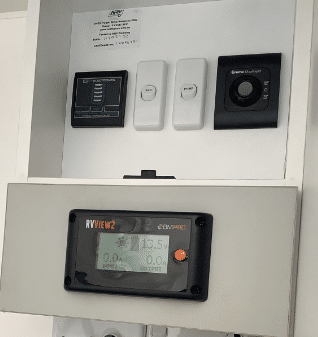
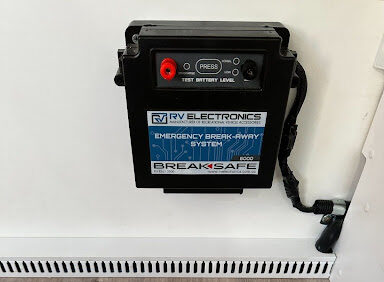
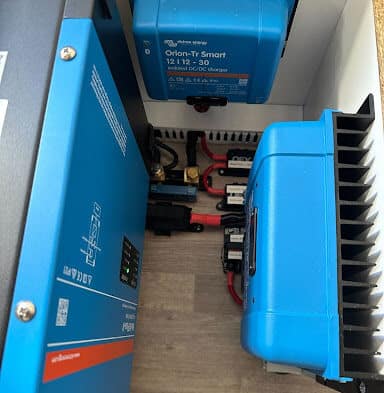
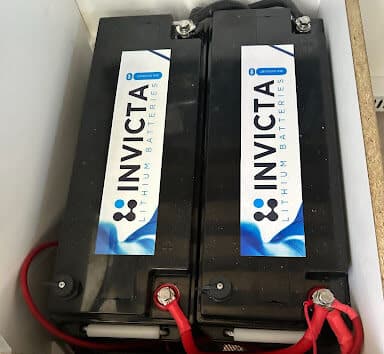

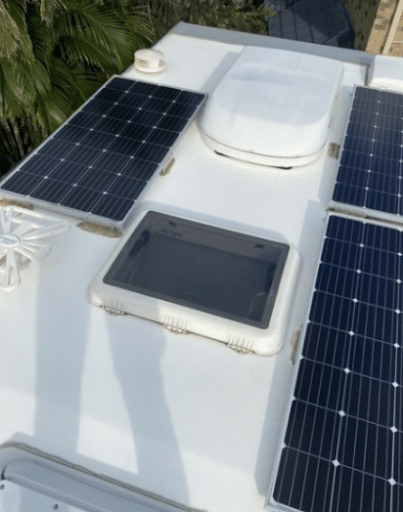
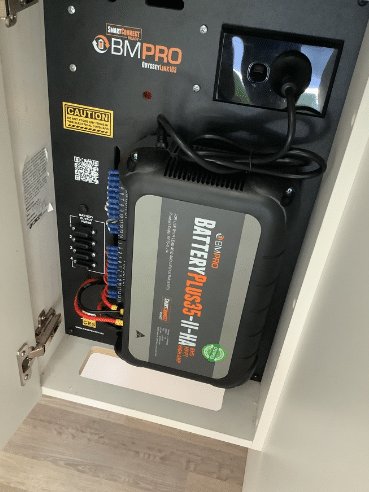

Ultimately, choosing the environmentally responsible option requires considering the entire battery lifecycle and ensuring proper disposal.
9. Cost/Budget. Lithium batteries typically cost 2-5 times more than lead-acid batteries of the same or similar capacity.
- Long-term cost. While the initial cost of a lithium battery is higher, remember its lifespan is often 5-10 times longer than lead-acid. This can lead to fewer replacements and potentially lower overall battery costs over time.
- Performance benefits. Lithium batteries offer faster charging, deeper discharge, and lighter weight, potentially improving convenience and fuel efficiency.
- Future-proofing. Choosing lithium positions you for the future as this technology becomes increasingly prevalent in the caravan industry.
10. Weight. Lithium’s Weight Advantage Lithium batteries truly shine in the weight department. Compared to lead-acid batteries of the same capacity, they can be a staggering 50-70% lighter! This translates to:
- Reduced caravan weight. Shed those kilos and enjoy improved fuel efficiency, better handling, and increased payload capacity. Imagine the possibilities!
- Space optimisation. The smaller size of lithium batteries opens up valuable storage space in your caravan, allowing you to bring along more of the essentials.
- A typical 100Ah lead-acid battery can weigh around 28-30kg. A comparable 100Ah lithium battery would only weigh around 14-15kg.
This substantial weight reduction offers several advantages for caravans:
- Improved fuel efficiency. A lighter caravan consumes less fuel, thanks to reduced weight dragging it down.
- Enhanced handling. A lighter caravan is more agile and responsive on the road.
- Increased payload capacity. With less battery weight, you have more freedom to carry other essentials or gear for your adventures and/or you avoid pushing the weight limits and potentially getting into trouble with the law.
- Ease of handling. Lifting and installing a lighter lithium battery is much easier than wrestling with a heavy lead-acid one with double the weight.
Overall, the considerable weight advantage is one of the most compelling reasons to switch to lithium batteries for your caravan. It translates to a more efficient and enjoyable experience.
So we have covered off the benefits of lithium, how about the other side of the story, the benefits of lead-acid batteries?
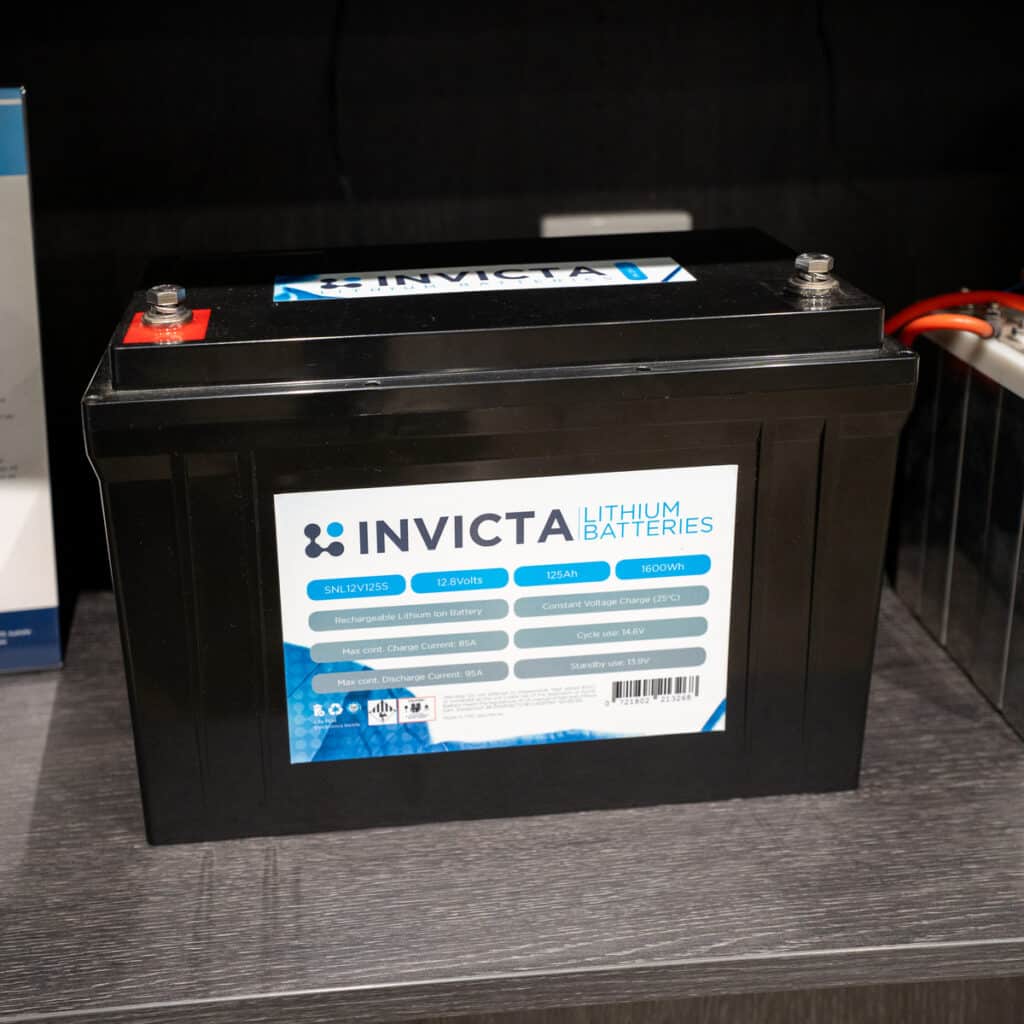
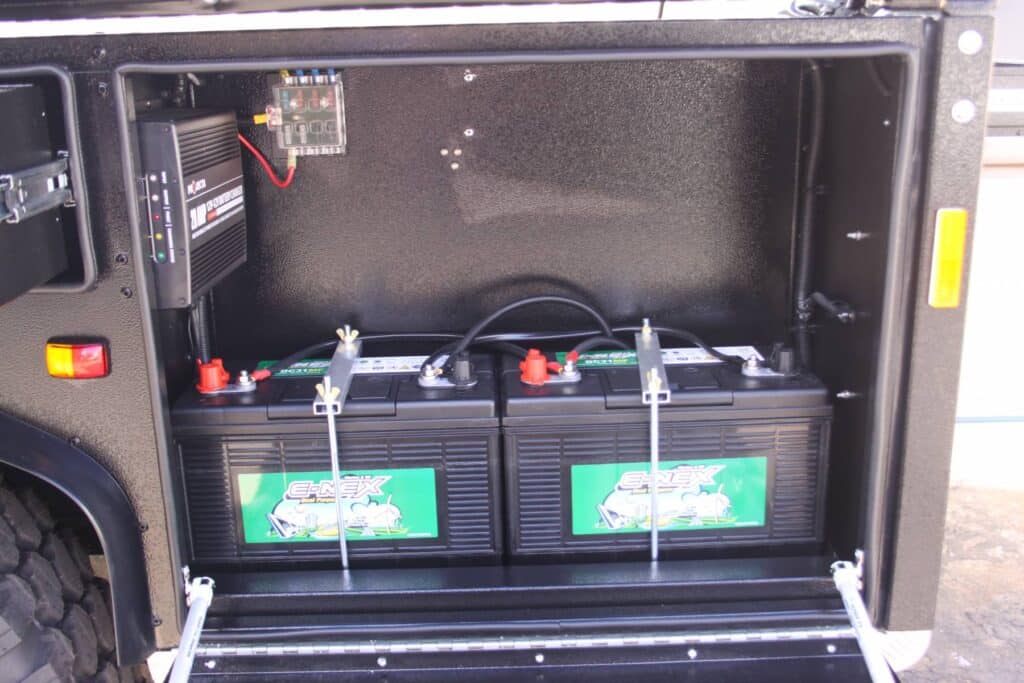
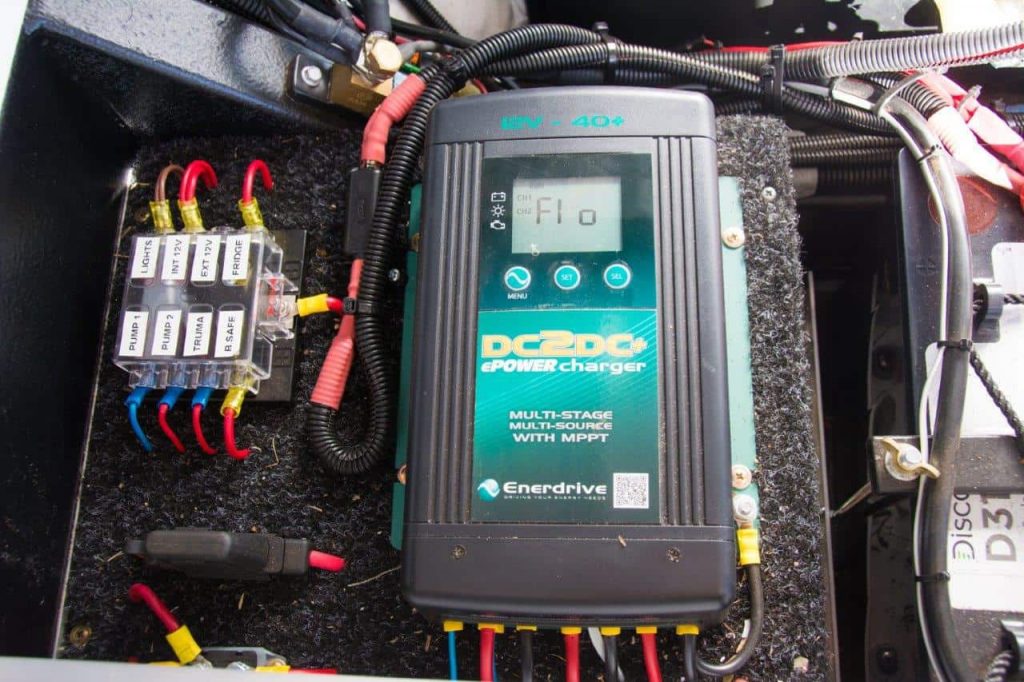
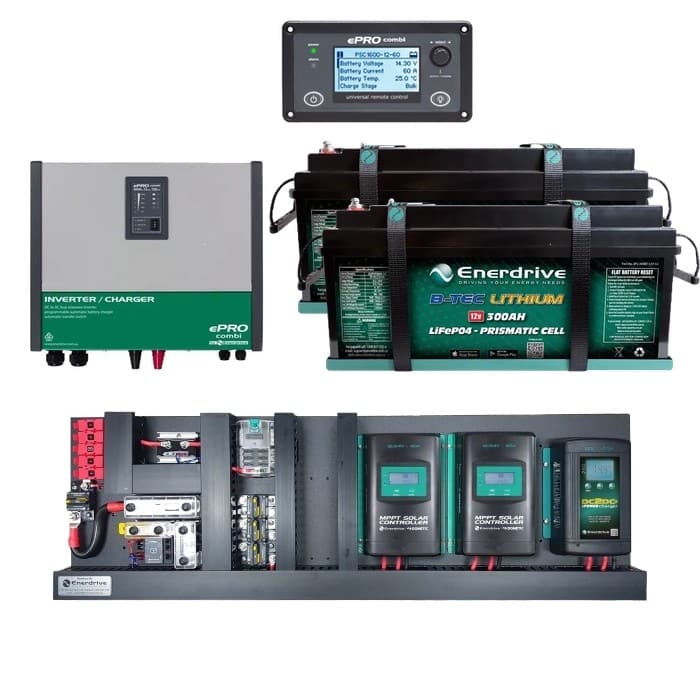
- Lower upfront cost. Lithium batteries are significantly more expensive than lead-acid batteries of the same capacity. While their lifespan and other benefits can make them cost-effective in the long run, the initial investment can be a hurdle for some.
- Wider availability and compatibility. Lead-acid batteries are widely available and compatible with most off-grid or caravan systems. Finding replacements or troubleshooting issues is often easier due to their long history and widespread use.
- Less sensitive to extreme temperatures. While both types of batteries perform best in temperate conditions, lead-acid batteries can handle harsher environments, particularly cold temperatures, better than lithium. Lithium batteries can lose capacity and discharge faster in extreme cold.
- Lower environmental impact. While both types require responsible disposal, lead-acid batteries generally have less complex recycling processes and contain fewer rare materials than lithium, potentially making them a more environmentally friendly option depending on your priorities.
- Simple maintenance. Lead-acid batteries require regular maintenance, such as checking electrolyte levels and topping them off, but many find this process straightforward and manageable. Lithium batteries are generally maintenance-free, but any issues require specialised handling due to safety concerns.
- Suitable for low-discharge applications. If your caravan usage patterns only involve shallow discharges (e.g., occasional weekend trips), a lead-acid battery might be sufficient. The deeper discharge capabilities of lithium wouldn’t be fully utilised, and the higher cost may not be offset by extended lifespan.
While the initial investment might be higher, the long lifespan, faster charging, and other advantages often make lithium batteries a cost-effective choice in the long run.
What is included in a lithium battery system?
A complete lithium battery system for caravans usually involves several key components:
- Lithium batteries: The star of the show, providing power storage and discharge for your caravan’s electrical needs. Choose LiFePO4 batteries for optimal safety and stability in caravan applications.
- Battery Management System (BMS): The brain of the system, monitoring battery health, voltage, temperature, and current flow. It ensures safe operation by preventing overcharging, over-discharging, and overheating.
- DC-DC charger: Converts shore power or generator power to the appropriate voltage for charging your lithium batteries. Some BMS systems might have integrated DC-DC chargers.
- Solar regulator?: Enables charging your batteries from the sun, extending your independence and contributing to a more sustainable approach.
- Battery compartment: A dedicated, well-ventilated, and secure space for housing the batteries, ideally with temperature monitoring capabilities.
- Wiring and fuses: The electrical connections between the various components should be designed for the specific amperage requirements of the lithium system. Use appropriate fuses for additional safety.
- Monitoring display (optional): Provides real-time information about battery status, voltages, currents, and charging/discharging cycles.
- Disconnect switches: Allows isolating the battery system for safety during maintenance or storage.
- Solar panels: To harvest the sun’s power for efficient charging.
- MPPT solar charge controller: To optimise solar charging efficiency.
- AC inverter: To convert DC battery power to AC for powering appliances.
- Battery-to-battery charger: To charge a smaller auxiliary battery from the main lithium system.
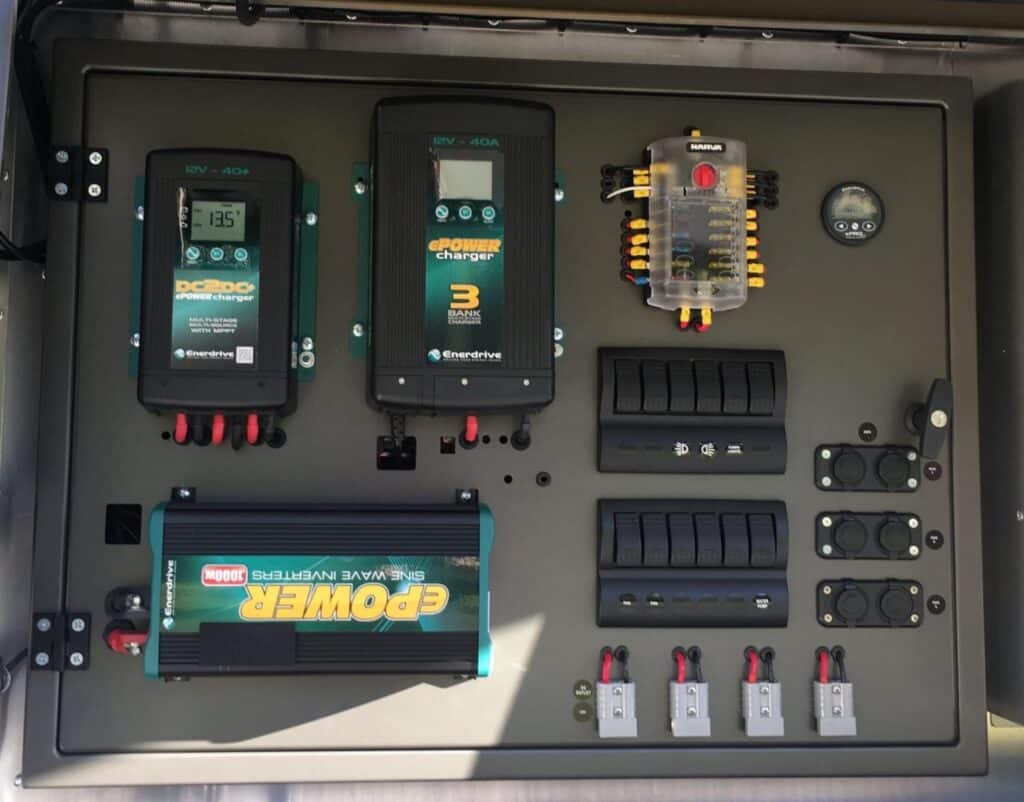

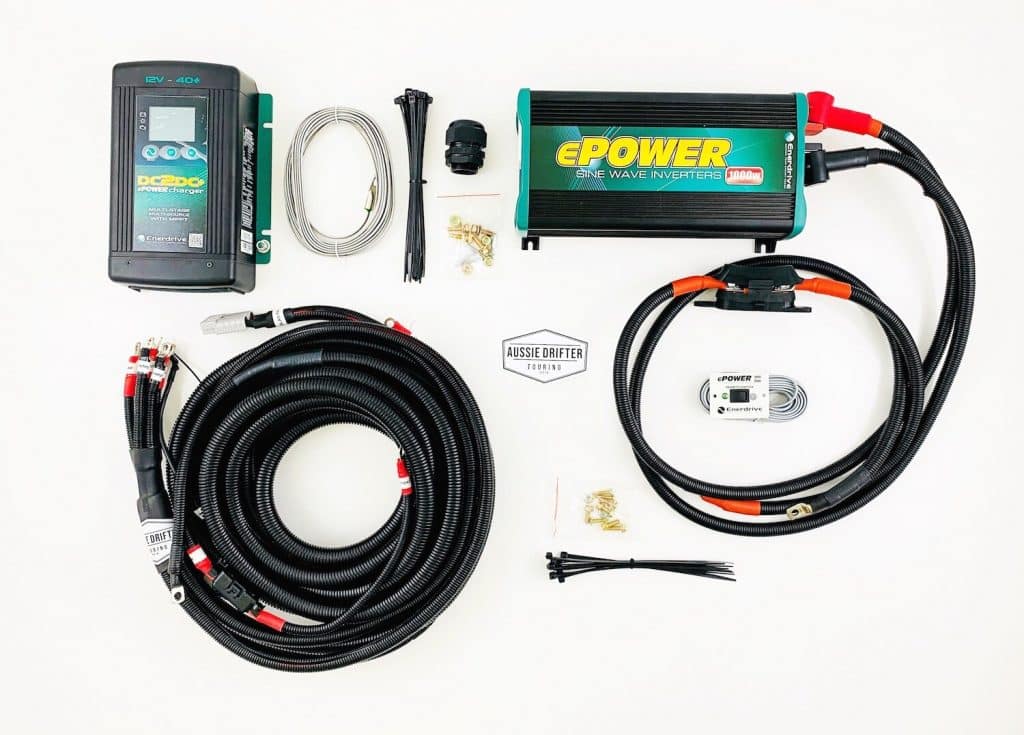
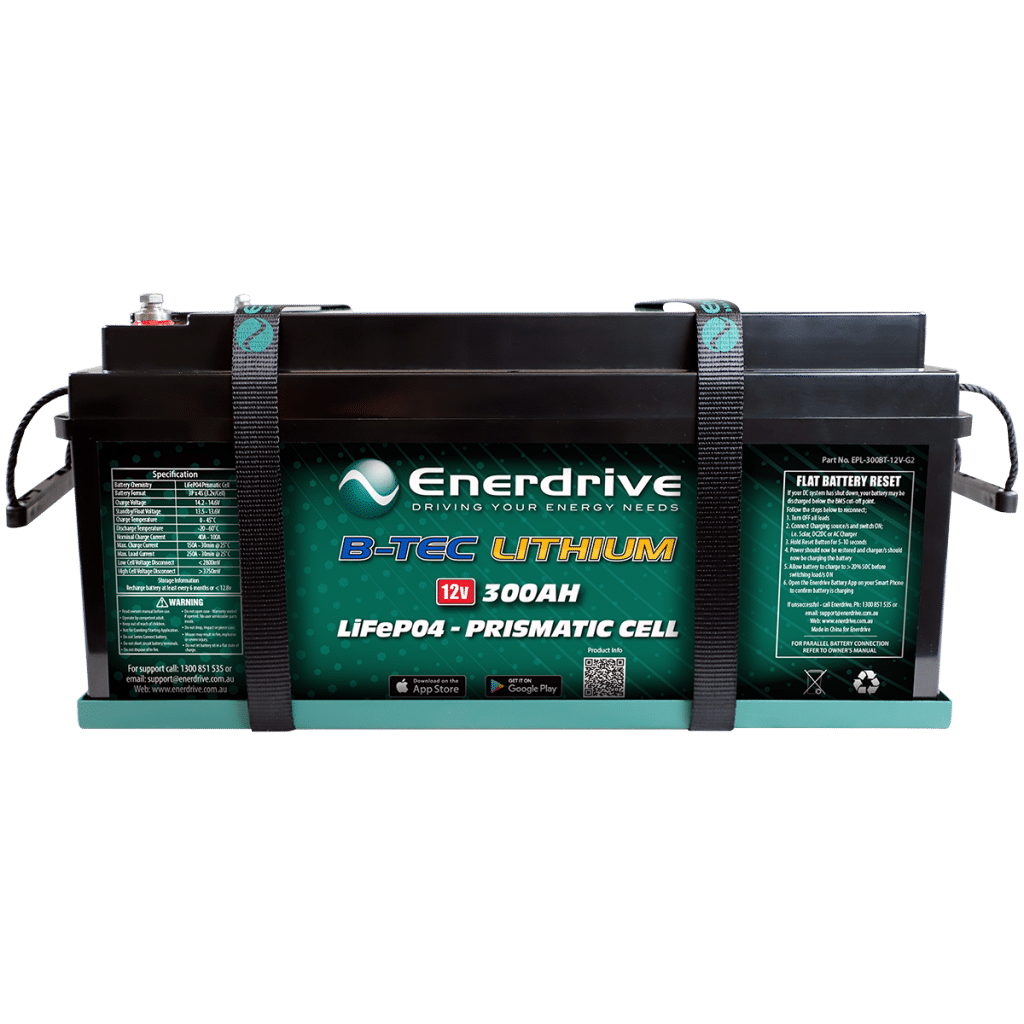
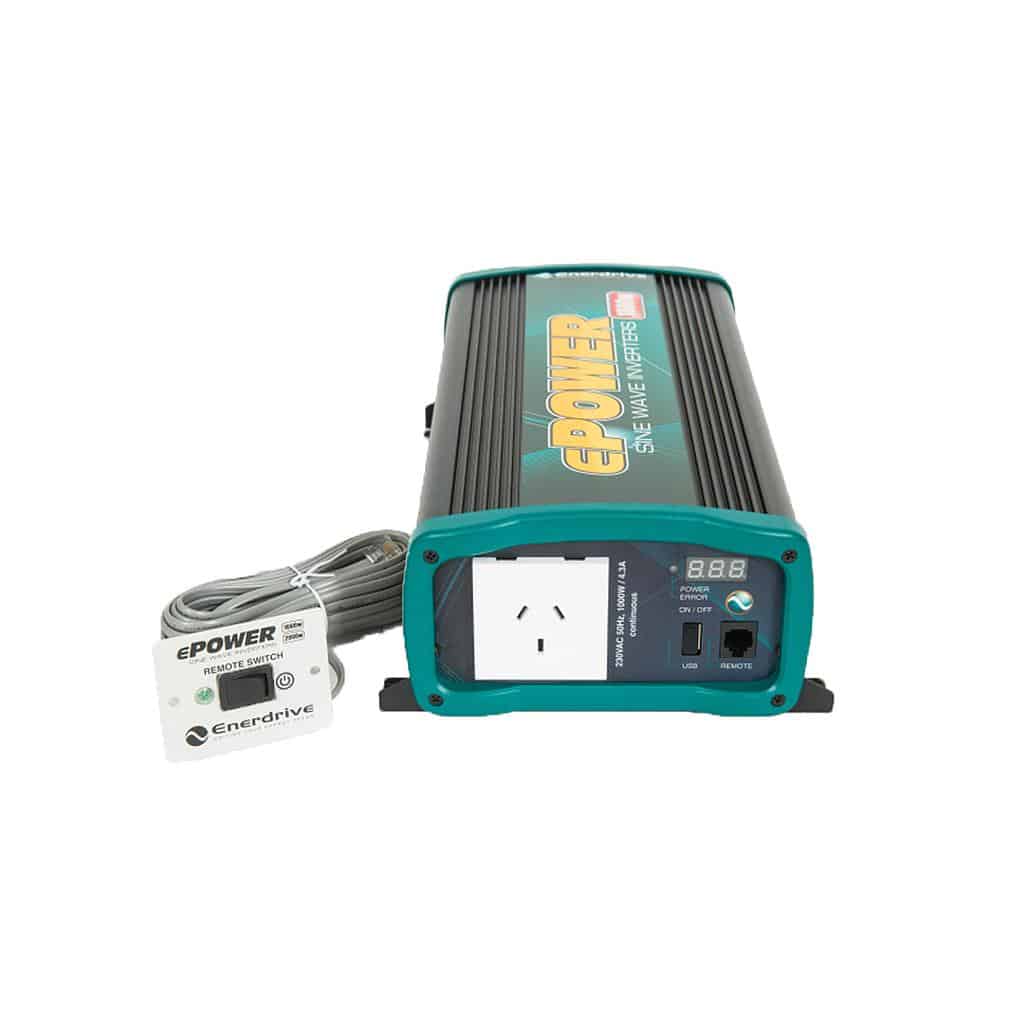
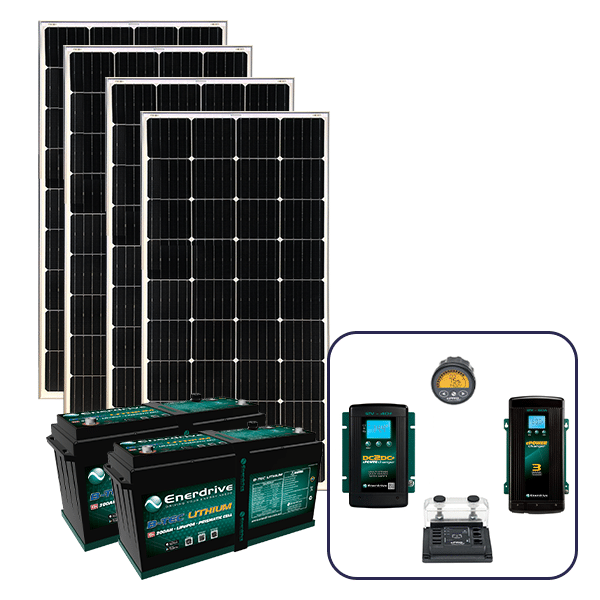
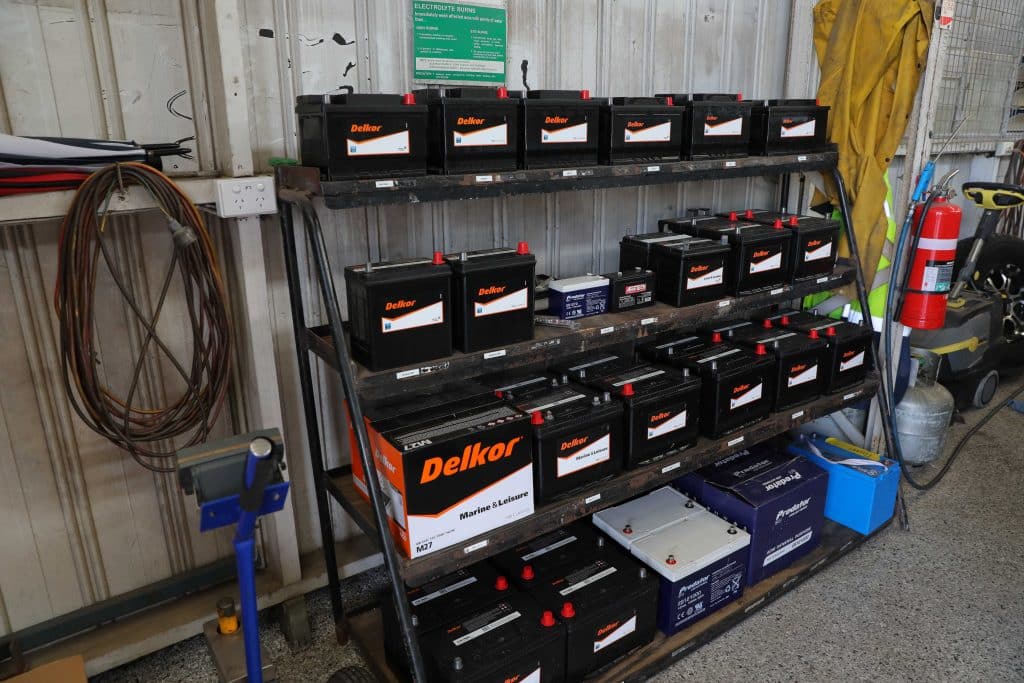
So what is a ‘Lithium Ready’ Caravan?
A “lithium ready caravan” refers to a caravan that’s specifically designed or pre-equipped to seamlessly accommodate a lithium battery system. Essentially, it’s built with the advantages of lithium batteries in mind, eliminating potential compatibility issues and simplifying the transition from traditional lead-acid batteries.
Put simply, the concept is to make a lithium transition easier and more cost effective in the future. From a sales and marketing perspective it is arguably a great technique to leverage off ‘lithium’ and to help overcome the objection of not having lithium batteries.
Here’s what typically defines a lithium ready caravan:
- Pre-wired for lithium: The electrical system is already wired and configured for compatibility with lithium batteries. This includes proper voltage input and output ranges, appropriate charging profiles, and safety considerations built into the wiring.
- Battery space optimisation: The compartment or designated area for the battery is sized and designed to comfortably house a lithium battery of suitable capacity. This often involves considerations like ventilation and temperature control.
- Charging infrastructure: Many lithium ready caravans come equipped with compatible 12V and/or 24V chargers capable of handling the fast charging capabilities of lithium batteries. Some might even offer an integrated battery management system (BMS) for monitoring and optimisation.
- Weight optimization: The overall design and materials might be chosen with weight reduction in mind, taking advantage of the lighter nature of lithium batteries. This can improve payload capacity and fuel efficiency.
5. Information and support: Manufacturers of lithium ready caravans often provide resources and guidance on choosing and installing lithium batteries, ensuring a smooth transition for customers.
While the battery management system (BMS) plays a crucial role in a “lithium ready” caravan, it’s not the only difference compared to a caravan specifically designed for lithium batteries. Here’s a breakdown of other key distinctions:
Electrical system:
- Voltage compatibility: “Lithium ready” caravans might still have a 12V electrical system designed for lead-acid batteries, while true lithium caravans may feature a 24V system optimised for lithium performance and efficiency.
- Charging profiles: The charging system should be tailored to the specific needs of lithium batteries to ensure safe and optimal charging cycles. “Lithium ready” caravans might require adjustments or upgrades to match lithium needs.
- Wiring and fuses: The wiring gauge and fuse ratings might need to be different for handling the higher currents and capacities associated with lithium batteries.
Physical aspects:
- Battery compartment: True lithium caravans often have dedicated compartments designed for proper ventilation, temperature control, and secure positioning of lithium batteries. “Lithium ready” caravans might require modifications or adaptations to accommodate these needs.
- Weight distribution: Caravans built for lithium batteries are generally designed with the lighter weight of this technology in mind, optimising weight distribution and handling characteristics.
Additional features:
- Monitoring and display: True lithium caravans might come with integrated systems for monitoring battery health, voltage, temperature, and discharge/charge cycles, offering deeper insights and control compared to “lithium ready” alternatives.
- Safety features: Additional safety measures like automatic cut-offs for overcharging or overheating might be built into the electrical system of lithium-specific caravans.
Benefits of choosing a lithium ready caravan:
- Simplifies installation: Pre-wired configuration eliminates complicated rewiring and reduces installation time and cost.
- Peace of mind: Compatible components and expert design ensure system functionality and safety.
- Maximises lithium benefits: The caravan is built to leverage the advantages of lithium batteries, like faster charging and deeper discharge.
- Future-proof investment: You’re making a choice aligned with the evolution of caravan technology. This could result in better resale values and should make the future transition easier.
By choosing a lithium ready caravan, you gain the opportunity to easily experience the benefits of lithium batteries.
Unfortunately there have been some reported issues with caravans advertised as “lithium ready” not being truly prepared for lithium battery systems.
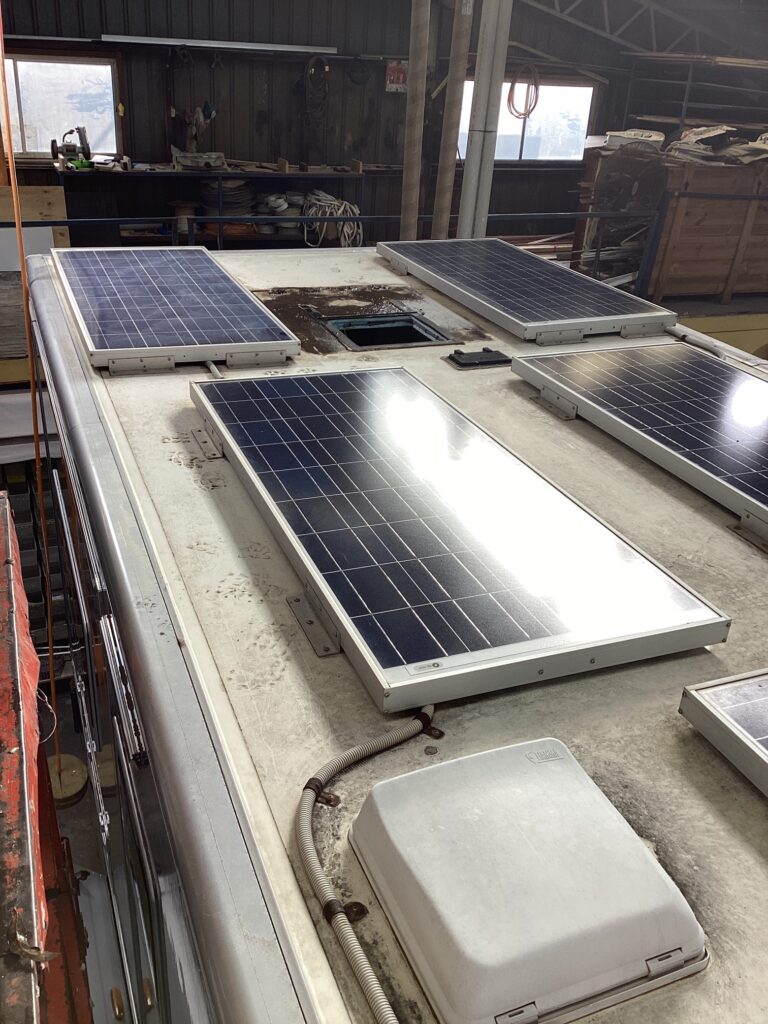
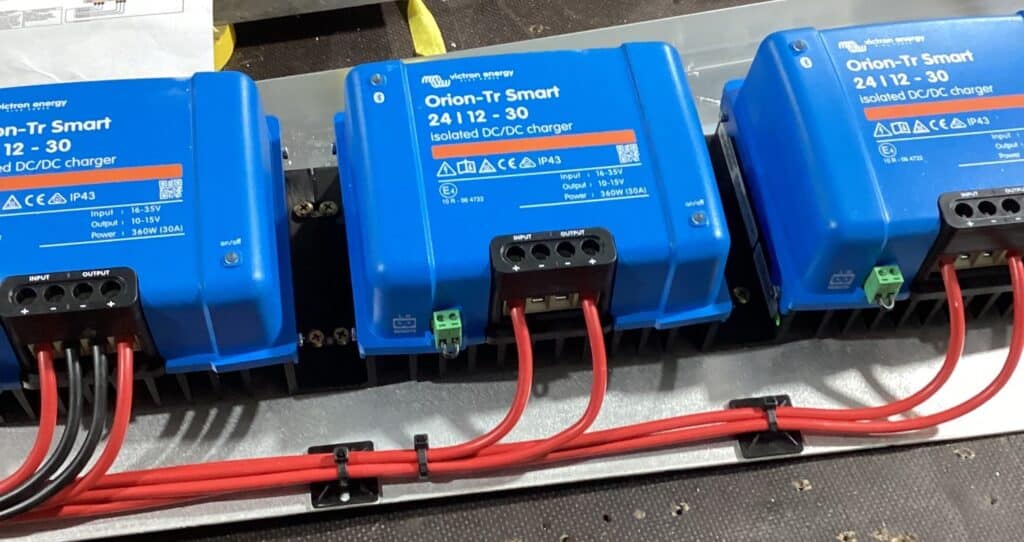
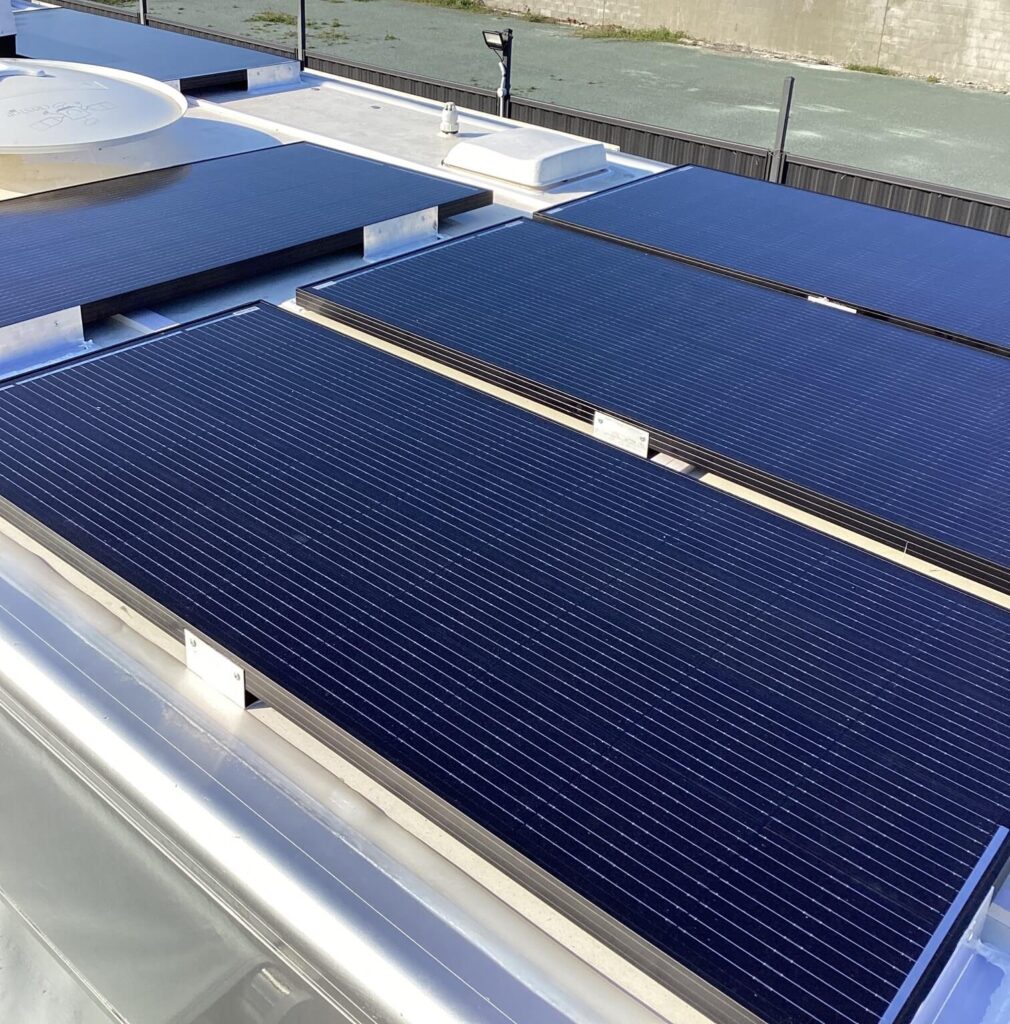
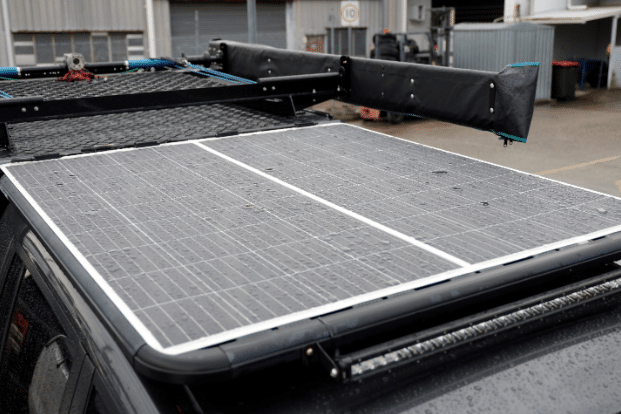
This can be frustrating for buyers who expect a seamless transition to the benefits of lithium batteries. Here are some of the issues that have been encountered:
- Incompatible wiring: In some cases, the advertised “pre-wiring” hasn’t been designed with the specific characteristics of lithium batteries in mind. This could lead to issues like incorrect voltage outputs, inadequate charging profiles, or potential safety hazards.
- Insufficient space: While a battery compartment might be present, it could be too small or lack proper ventilation for safely accommodating a lithium battery of suitable capacity. This could well lead to future issues with regulations.
- Lack of information or support: Some manufacturers might not provide adequate guidance or instructions on choosing and installing compatible lithium batteries in their “lithium ready” caravans. This can leave buyers feeling stranded and unsure how to proceed.
- Unexpected price add-ons: While advertised as “lithium ready,” some caravans might require additional purchases or modifications to fully support lithium batteries, pushing the final cost beyond initial expectations.
It’s important to note that not all “lithium ready” caravans experience these issues.
Many manufacturers are doing a great job of designing and building caravans that are truly compatible with lithium batteries. However, it’s crucial to be aware of potential problems and conduct thorough research before making your purchase.
Here are some tips for avoiding getting caught off guard by a “not-so-ready” lithium ready caravan:

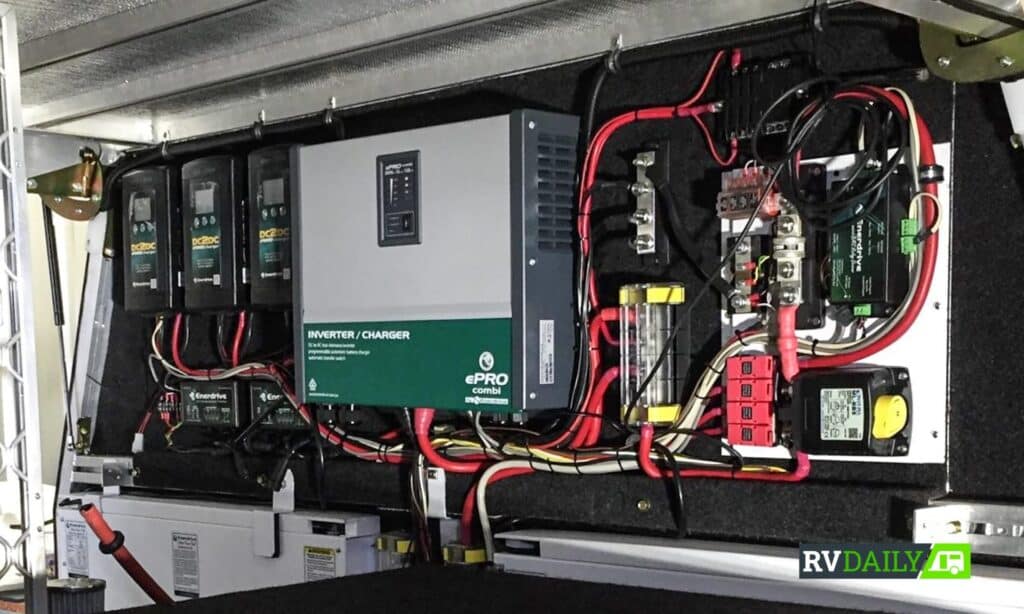

Ask detailed questions: Don’t just rely on the marketing language
- Talk to the manufacturer or dealer and ask specific questions about the caravan’s electrical system, battery compartment specifications, compatible lithium battery options, and available support resources.
- Request documentation. Ask for detailed technical specifications and installation guidelines related to the lithium battery compatibility features.
- Do your research. Read reviews and forum discussions from other caravan owners who have experience with specific ‘lithium ready’ models. See if you can find owners that have done the upgrade in their specific caravan from ‘lithium ready’ to ‘lithium’ and to understand what that process involved (and cost).
- Seek professional advice. If you’re unsure about anything, consider consulting with a caravan specialist familiar with lithium battery systems.
- By the time you get around to fitting the lithium batteries it could be outside your new caravan warranty period which could complicate matters further.
By being informed and proactive, you can ensure that your “lithium ready” caravan truly lives up to the label. So that in the future you can easily do the lithium upgrade and enjoy the many benefits of the more advanced battery technology.
So that is a lot to take in. The benefits of lithium, the benefits of lead-acid and ‘lithium ready’ caravans. After all that, who should be looking at a lithium battery setup? Is it for everyone?

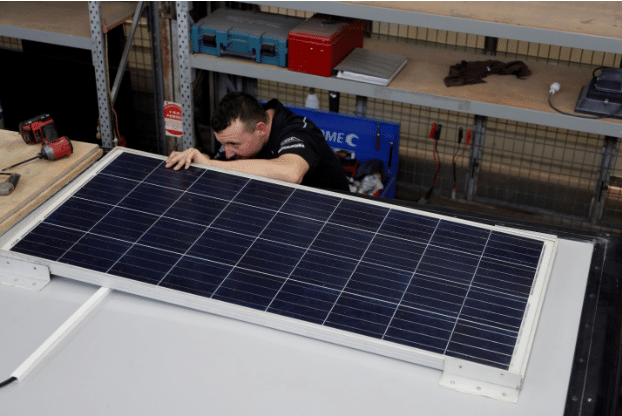
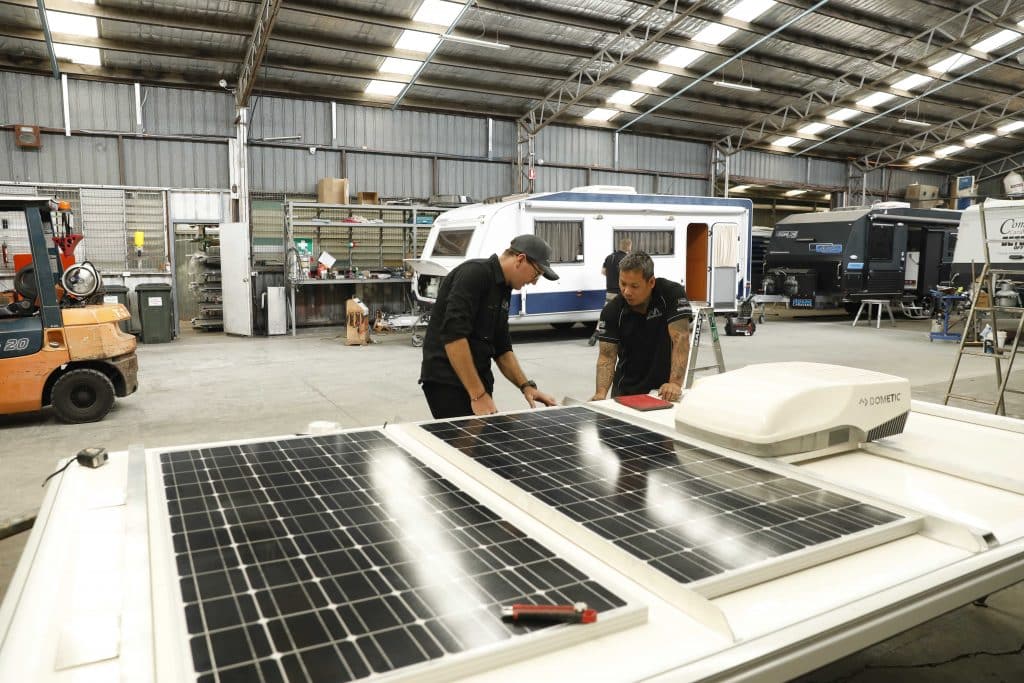
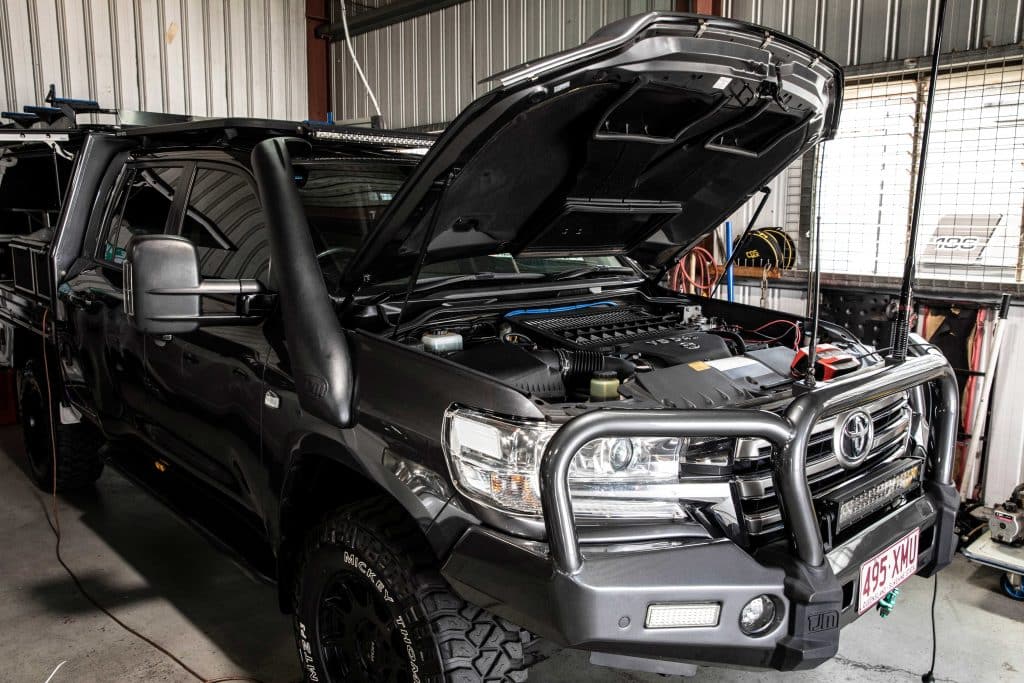
Good candidates for lithium batteries
- Off-grid enthusiasts. Lithium batteries offer longer discharge capabilities, ideal for extended stays away from mains power.
- Weight-conscious caravanners. Lithium batteries are significantly lighter, improving fuel efficiency and handling.
- Frequent travellers. Their faster charging times come in handy for shorter stopovers and quicker campsite setups.
- Performance seekers. Lithium batteries offer deeper discharge and faster charging, allowing for more demanding electrical usage.
- Tech-savvy adventurers. Those who appreciate cutting-edge technology and future-proofing their setup.
- Environmental-conscious individuals. Lithium batteries have longer lifespans, reducing waste and promoting responsible battery use.
People who might be better off with lead-acid batteries:
- Budget-minded caravanners: Lithium batteries have a higher initial cost, though long-term savings are possible due to their lifespan.
- Occasional caravanners: If you rarely use your caravan, the higher upfront cost might not be justified.
- Minimalistic users: If your electrical needs are basic and lead-acid batteries suffice, lithium might be overkill.
- Caravans without compatible infrastructure: Retrofitting caravans for lithium can be a large investment and involve modifications.
Here are some additional tips for deciding:
- Consider your budget and usage patterns.
- Research different lithium battery options and their safety features.
- Evaluate your caravan’s existing electrical system and compatibility.
- Talk to experienced caravanners who have used lithium batteries.
- Weigh the long-term benefits of lithium batteries against the initial cost.
Contact the team at AllBrand Caravan Services for your all caravan and motorhome servicing, repairs, insurance repairs and upgrades.
07 3869 2969 101 Connaught Street, Sandgate info@allbrandcs.com.au